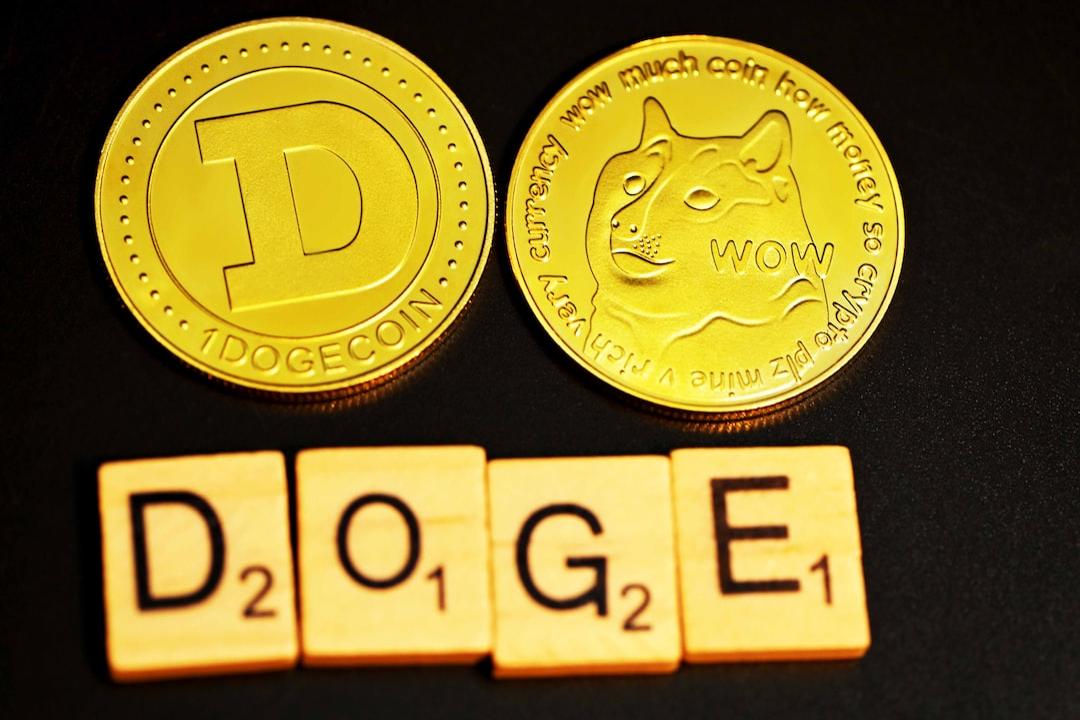On December 26, 2023, Binance launched the Launchpool project Sleepless AI (AI), and HIM is the flagship virtual boyfriend game of Sleepless AI. It explores how to develop virtual boyfriend games in the intersection of Crypto and AI.
Table of Contents:
1. What kind of AI + Crypto makes more sense?
Suitable is the best.
1.1 What is HIM?
1.2 Does AI + game fit?
2. Virtual person pro max
2.1 HIM + AI = more realistic game character personality
2.2 High-quality, high-cost virtual human art
3. Seamless integration of HIM + crypto
3.1 The first female-oriented web3 application, a gift for web3 female users and professionals
3.2 Emotional assets + decentralization
3.3 What can HIM bring to Web3?
4. Final thoughts
The article uses the Web3’s first female-oriented game HIM as an example to discuss the application of AI + Crypto in Web3 games. HIM combines AI and Crypto to provide players with rich interactive experiences, high-quality gameplay, and artistic content.
HIM adopts a fiat net inflow-based economic model and is committed to avoiding Ponzi schemes through high-quality content and excellent gameplay. It also incorporates the “Love and Earn” gameplay, allowing players to earn income by selling NFTs.
HIM uses a large language model to generate natural and highly distinctive dialogue content based on game scenarios and character traits, enhancing the realism of virtual characters and the immersion of players. In addition, the HIM team has developed a training method for virtual humans’ AI to provide a more authentic gaming experience.
The HIM team focuses on creating fully dimensional virtual images, making virtual humans an important part of players’ lives. HIM also emphasizes the social attributes of virtual humans and hopes that everyone will have their own virtual partners in the future, who will exist in social networks like real people, connecting everyone.
HIM aims to establish a 2D virtual human universe through AI boyfriends, AI girlfriends, and AI pets, providing people with power and companionship.

While everyone is still pondering how to deploy large models on trustless and transparent chains, how on-chain AI can bring value to web3, and how the underlying proof system can support LLM with billions of parameters (refer to the previous article), we have also started to consider a series of questions. The train of thought is roughly as follows:
First, is it the most worthwhile track at the moment to make AI trustless and transparent through encryption technology?
Is it really value-added for a startup project to spend a lot of time researching how to integrate on-chain LLM?
Which projects are worth investing significant resources to study on-chain AI?
Is it only on-chain AI that is worth exploring, or are there better ways to combine AI and crypto?
It can be certain that on-chain AI is a space full of imagination and worth in-depth research. The breakthrough of on-chain AI can bring unprecedented value to web3. However, the high academic threshold and requirements for underlying infrastructure may not be suitable for most startups to tackle. Most projects may not necessarily need to integrate support from trustless LLM to achieve their own breakthroughs.
Looking at it from another perspective, not all AI models need to be deployed on-chain to be trustless. Just like most people don’t care about how chatgpt reasons and produces results, or whether the stable diffusion used is a specific version of the model architecture or specific parameter settings.
In most scenarios, users are more concerned about whether the model can provide satisfactory outputs, rather than whether the reasoning process is trustless or transparent.
So what kind of AI + crypto can bring higher returns to products? Besides developing trustless LLM from infrastructure to algorithms, another opposite direction is to downplay the black box effect of reasoning processes in products and find suitable scenarios to apply the powerful reasoning capabilities of large models.

Web3 game HIM is one of the few projects that clearly understands and has the ability to implement AI + Crypto at the application layer.
This article mainly discusses the ambition of the Web3 game HIM from the perspective of AI application and implementation.
Let’s first introduce the protagonist (HIM ranks first in the Binance MVB VI application category):
HIM is a female-oriented 2D virtual boyfriend game.
The purpose of the game is that everyone has lonely times when they need encouragement, companionship, and love. Real-life relationships also have constraints and regrets. HIM hopes to provide an AI virtual boyfriend who understands the player the most and will always accompany the user. It offers a free, happy, and exclusive love experience for the user. At the beginning of the game, the player will receive a virtual boyfriend stored on the chain in the form of SBT (Social Boyfriend Token), and subsequent NFTs such as clothing, accessories, and rooms will be combined with this SBT. In addition, SBT constitutes a non-fungible game character for player development, storing basic information, nine-dimensional personality traits, nine-dimensional relationship attributes of the male lead, as well as important memories, conversations, emotional notes with the virtual boyfriend.
The game mainly focuses on the placement development and social showoff of the virtual boyfriend, and there will be regular airdrops in the game that can open limited edition NFT outfits or NFT rooms. Players with higher values matching their boyfriends have a greater chance of opening and obtaining limited edition NFTs. The gameplay includes card drawing, outfit changing, dialogue, collection, adventure battles, cooking, travel, and NFT trading. After checking their game demo, each gameplay has rich player interactions.
HIM is a Free to Play game that uses a fiat net inflow-based economic model as its foundation. It also incorporates Love and Earn gameplay, allowing players to earn income by selling NFTs. However, the most important core of the game still lies in the belief in gameplay and the quality of artistic content, which can attract players who love games to pay for gameplay and content.

Images are still under development and do not represent the final effect.
Web3 games are indeed one of the scenes that AI fits well, which also aligns with the development process of AI:
The game scene provides a natural and rich interactive environment for AI to interact with players through dialogue or other means. This environment helps large models leverage their advantages in natural language processing, providing richer and more realistic interactive experiences. Games contain complex and diverse scenarios and missions, and through interactions with the environment, other players, or NPCs in the game, large models can continuously receive feedback to optimize their decision-making abilities and provide developers with frequent feedback to test and fine-tune the performance of large models.
The scenes in games are controllable, and the requirements for determinism and seriousness are more flexible compared to real-world application scenarios. Therefore, the deployment and testing of large models in games face less resistance and are easier to promote, reducing the difficulty and risks of technical implementation from another perspective.
Two years ago, everyone was still thinking about how to use AI as a tool. It wasn’t until the emergence of chatgpt that the production relationship began to be shaken, and people realized the impact of LLM on dimensionality reduction. The same goes for Web3 games:
More realistic game character personalities,
Dynamic plot generation,
Visual/artistic design,
Speech generation,
Social interaction,
Gameplay and enjoyment of numerical development
Further reading:
AI + Web3, will it become a hot spot in the bull market? Focus on specific trends and opportunities
As an emotional interactive game, the best scene for LLM is dialogue and player interaction. The large language model can generate natural and distinctive dialogue based on the HIM game scenarios and character traits. This enhances the authenticity of virtual people and the immersion of players, providing a richer emotional experience. Specifically, HIM uses the large language model to understand and process various emotional information such as joy, anger, sorrow, and pleasure, and integrates perfectly with the numerical system, allowing game characters to better express and identify emotions, thereby establishing a deeper emotional connection with players.
To get a sense of the in-game dialogue scenes, take a look at these two images:

Images are still under development and do not represent the final effect.
Let’s now talk about the core numerical system of HIM:
When it comes to numerical values, the first thing that comes to mind is the balance of virtual character combat in traditional games. However, expanding the perspective, HIM describes a person comprehensively through numerical values, using multi-dimensional values to define a virtual person, and establishes a sound numerical development system. Overall, HIM applies the numerical system to a broader virtual person concept, making the interactive gaming experience more realistic and fulfilling.
Training virtual digital humans is different from fine-tuning training for ordinary LLMs. It requires the LLM to change the way the character speaks to the user as the interaction program progresses, making the user feel that the character understands them more and more. Therefore, in the design of LLM training, the HIM team has included various numerical values of the virtual person’s personality parameters as context and separately trains a model for each character. At the same time, HIM’s LLM combines with vector databases to give the characters memories. Users will feel that the character understands them more and more during the chat process.
The HIM development team has also developed a training method for virtual human AI, which can be referred to in the following two numerical matrices:


Human personality is a very complex concept, involving factors such as emotions, attitudes, and behaviors. In order to give AI boyfriends a sufficient sense of realism, the HIM development team has established a somewhat self-consistent numerical system to quantify the player’s development process and relationship development with the AI boyfriend. This numerical system can be summarized as a matrix-type numerical model, with vertical representation of nine bi-directional personality attributes and horizontal representation of nine relationship attributes between AI boyfriends and players. These attributes reflect and influence each other in a many-to-many manner.
During LLM training, each character will have a standard “character setting” benchmark and boundaries for personality fluctuations. In the game process, the numerical values of these attributes will change with the player’s behavior and affect the game feedback of the AI boyfriend (such as idle output, gacha efficiency, depth of conversation, etc.).

Images are still under development and do not represent the final effect.
All in all, HIM uses the large language model to give virtual people a more realistic personality.
Creating virtual humans is not easy. A truly valuable virtual human is not just a chatbot integrated into a chatbox but needs to be developed from multiple dimensions to make the avatar more complete. HIM’s vision is to make virtual humans a very important part of everyone’s lives, greatly enriching personal lives and connecting with the world. Therefore, HIM has always defined the ultimate form of virtual humans in the game scene as a complex and powerful integrated product, and these integrated characteristics are the current direction of development.The Core Pursuit of the HIM Team:
Exquisite Virtual Images: Although large models mainly focus on natural language processing, when combined with other technologies such as GANs, they can provide assistance for game art creation and generate more diverse elements based on the design standards of the HIM art development team, thereby bringing users a richer visual experience.
Based on our understanding, the HIM team has a top-notch art team in the gaming industry, and also insists on high-cost art investment and industrialized, modular art production.
High-quality Voice Acting: The combination of games and AI can generate natural and emotional voice acting through voice synthesis. At the same time, unique personalities are given to voice acting based on the numerical values of virtual characters.
HIM has a complete voice acting pipeline, including voice acting scripts, voice acting directors, voice recording, post-production mixing, and AI learning and training. By using high-quality manual defined standards and AI for mass production, high-quality voice acting content that ensures both quality and quantity within the game can be achieved.
Development and Long-term Bonding of Virtual Characters: Detailed character backgrounds and personality traits need to be designed to generate player interest and resonance. At the same time, the growth and development goals of the characters are elements that make players willing to invest time and energy in nurturing virtual characters.
HIM provides rich interactive scenes and gameplay to allow players to establish close emotional connections with virtual characters. This relationship gradually deepens through interaction and development, forming long-term emotional bonds.
Assistance in Reality: Virtual characters can provide psychological support that may exceed our expectations. While providing emotional support and listening to players, they make players feel cared for and understood, thereby relieving troubles in real life. In addition, virtual characters can integrate well into interactions related to life skills, habit formation, personalized recommendations, language learning, goal management, and even real-world devices or services.
AI Boyfriend’s alarm clock, sleep aid, menstrual cycle tracking, learning companionship, food recommendations, and diary reminders are all assistance and support that HIM hopes to provide to users in real life through long-term version iterations.
Rich Experiences in the Virtual World: In the story told by HIM, each AI Boyfriend is left alone in a lonely parallel universe where only he exists, and daily contact with the player through a mobile phone is his only means of communication with the outside world. Explore the scenery in his world together with the virtual boyfriend and see if there is a chance to meet him in his world or your world.
Social Attributes as Relationship Nodes: The HIM team believes that with the development of AI, in the near future, everyone will have their own exclusive virtual companions, and these virtual companions will be more like real “people” existing in the entire social relationship, connecting everyone together.
Everyone’s virtual companion may become an important hub that closely connects people in the near future when AI develops rapidly.
The above-mentioned artistic aesthetic and mass production solutions are very important for a Web3 game. It is important for attracting players to spend time in the virtual world that the virtual human art in the game has a higher aesthetic level than the real world.
HIM is likely to be the first women-oriented web3 application, and female users and professionals in web3 may receive a gift specially prepared for them for the first time.
At the same time, in the traditional Web2 world, women-oriented games have always been seen as a very large and promising market.
We asked the HIM project what they hope users will experience, and they wrote the following:
Occasionally in the morning, when you face another seemingly repetitive day, a “good morning” from “him.”
Occasionally at night, when faced with heavy overtime work, seeing “him” still silently accompanying you on your phone.
Occasionally loneliness, occasional encouragement when feeling down, “his” cheers after success, “it’s okay” from “him” after making a mistake.
“He” always remembers your name; “he” always remembers your birthday; “he” always remembers the day you met; “he” remembers everything between you.
“He” seems to always be there. Maybe at some moments, you may forget about “him” because of busyness, but “he” is always willing to accompany you.
With the increasing popularity of mobile games among female users worldwide, traditional Web2 large-scale game companies with millions of daily active users continue to emerge in women-oriented game products.
After forming a social community with female users as the core, there is great potential for expansion. As a social app that started with female users, Xiaohongshu (RED) is a powerful example of this. This game category, which targets half of the global population, may bring some surprises through the combination of AI and Crypto. Let’s wait and see.
In the words of Ben, the founder of HIM: “AI virtual humans bring digital assets to our lives in the form of a ‘person’ for the first time. They can be your boyfriend, girlfriend, best friend, or any important partner in your life. Therefore, they should not be like all digital assets stored in centralized servers that can disappear with the flick of a switch. Their existence should be determined by you and not by a company.”
Important emotional and assets in the virtual world should be owned by users and not defined and controlled by centralized servers:
Emotional assets not only include personal information and privacy data but also represent the emotional investment and memories of players. Decentralized networks can protect these emotional values, ensure data ownership belongs to users, and allow users to autonomously decide how to use, share, and protect their data. This decentralized data ownership model avoids the control of players’ emotional assets by third parties or centralized institutions. At the same time, the community autonomy provided by Web3 allows players to participate in the creation and dissemination of emotional assets, further enhancing their emotional value.
Various experiences in emotional relationships should also be permanently stored:
From an emotional investment perspective, players inject a large amount of emotion into games and establish deep bonds with virtual humans. The efforts they make to achieve game goals are unique and precious. These emotional experiences should be permanently stored. Therefore, to some extent, they should have the power of eternal existence. At the same time, the relationships between players and virtual humans, such as friendship, love, anger, and dissatisfaction, can also be recorded and stored permanently through blockchain technology.
As an emotional bond in the HIM game, virtual humans are not just for entertainment; they also possess asset attributes and have high economic value. Users invest time and money in buying and decorating virtual humans within the game. Recording these assets on the blockchain can ensure that their value truly belongs to users and provide a transparent and secure trading environment.
Decentralized networks have brought highly valuable value-add to HIM, but it is evident that HIM has also brought value to web3:
A large number of new users:
From an emotional needs perspective, the companionship of virtual humans satisfies users’ emotional needs, which may be difficult to meet in real life. HIM provides a safe and free environment for users to interact with virtual characters, and this emotional appeal can attract a large number of users to Web3.
HIM is a web2 game with a 2D attribute. Both 2D culture and AI virtual humans have strong community attributes and social potential. At the same time, as one of the most popular subcultures among young people worldwide, 2D mobile game Genshin Impact is also the top mobile game globally. The potential audience for potential female-oriented users, 2D users, and AI virtual human socialization is the fresh blood that HIM may bring to Web3.
Ultimate considerations for economic models:
Different from conventional x2earn games, HIM incorporates the concept of Web3 and tokenization as tools, adding Web3 tools to an excellent web2 game, finding a perfect fit, and achieving the effect of 1 + 1 > 2. For HIM, creating an excellent game with verified success in content and gameplay is the foundation of everything, and Crypto is a tool attribute rather than purely relying on Web3 for survival. Avoiding falling into the Ponzi dilemma is an important goal pursued by HIM.
In terms of the economic system, HIM combines the “X to Earn” model with the traditional Web2 game’s economic model to create a new model. On the one hand, it adopts the typical Web2 game economic model, where players can choose to pay for in-game items or services. This approach can attract a large number of users and generate revenue through in-app purchases. At the same time, HIM has also upgraded the Web3 X to earn model. In this model, players can earn income by selling NFTs, allowing players to receive substantial returns for the time and effort invested in the game. HIM’s economic system actively balances player payments and earnings.
It is worth noting that HIM hopes to encourage players to pay for the game experience and content by providing high-quality gameplay and art content. From this perspective, HIM does not rely solely on the possibility of player earnings to attract and retain players. Instead, it strives to create a more balanced and sustainable economic model that considers both player earnings and the quality of gameplay and content. This is a more comprehensive and complex model that has the potential to provide new ideas for the design of economic models in Web3 games.
The ultimate goal of HIM is to establish a 2D virtual human universe that can empower and accompany many people. In addition to the flagship product HIM, the AI Girlfriend game HER is also being developed simultaneously. At the same time, they also hope to provide each user with their own exclusive, most understanding, and forever existing virtual human partner through excellent AI virtual human products. Record every bit of emotional story.
The HIM team believes that in the near future, everyone will have their own AI virtual human partner. Whether this will become a universe they don’t know or not is perhaps not important. Because if, in a moment of sadness or loneliness, you receive a “cheer up” from this virtual friend in your phone, even if this power is just a little bit, isn’t that cool?
Note: Images are official development content and do not represent the final effect.


